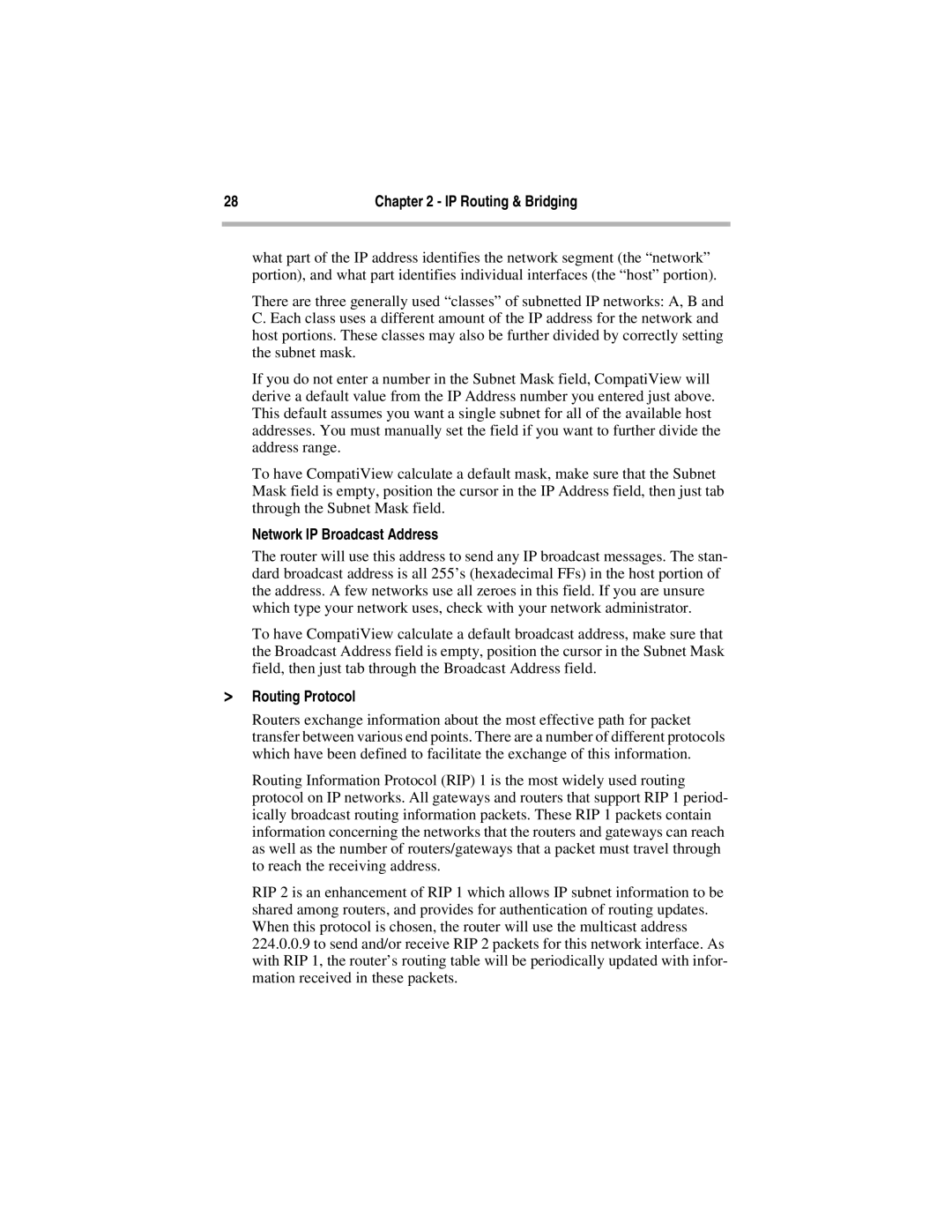28 | Chapter 2 - IP Routing & Bridging |
|
|
what part of the IP address identifies the network segment (the “network” portion), and what part identifies individual interfaces (the “host” portion).
There are three generally used “classes” of subnetted IP networks: A, B and C. Each class uses a different amount of the IP address for the network and host portions. These classes may also be further divided by correctly setting the subnet mask.
If you do not enter a number in the Subnet Mask field, CompatiView will derive a default value from the IP Address number you entered just above. This default assumes you want a single subnet for all of the available host addresses. You must manually set the field if you want to further divide the address range.
To have CompatiView calculate a default mask, make sure that the Subnet Mask field is empty, position the cursor in the IP Address field, then just tab through the Subnet Mask field.
Network IP Broadcast Address
The router will use this address to send any IP broadcast messages. The stan- dard broadcast address is all 255’s (hexadecimal FFs) in the host portion of the address. A few networks use all zeroes in this field. If you are unsure which type your network uses, check with your network administrator.
To have CompatiView calculate a default broadcast address, make sure that the Broadcast Address field is empty, position the cursor in the Subnet Mask field, then just tab through the Broadcast Address field.
>Routing Protocol
Routers exchange information about the most effective path for packet transfer between various end points. There are a number of different protocols which have been defined to facilitate the exchange of this information.
Routing Information Protocol (RIP) 1 is the most widely used routing protocol on IP networks. All gateways and routers that support RIP 1 period- ically broadcast routing information packets. These RIP 1 packets contain information concerning the networks that the routers and gateways can reach as well as the number of routers/gateways that a packet must travel through to reach the receiving address.
RIP 2 is an enhancement of RIP 1 which allows IP subnet information to be shared among routers, and provides for authentication of routing updates. When this protocol is chosen, the router will use the multicast address 224.0.0.9 to send and/or receive RIP 2 packets for this network interface. As with RIP 1, the router’s routing table will be periodically updated with infor- mation received in these packets.
